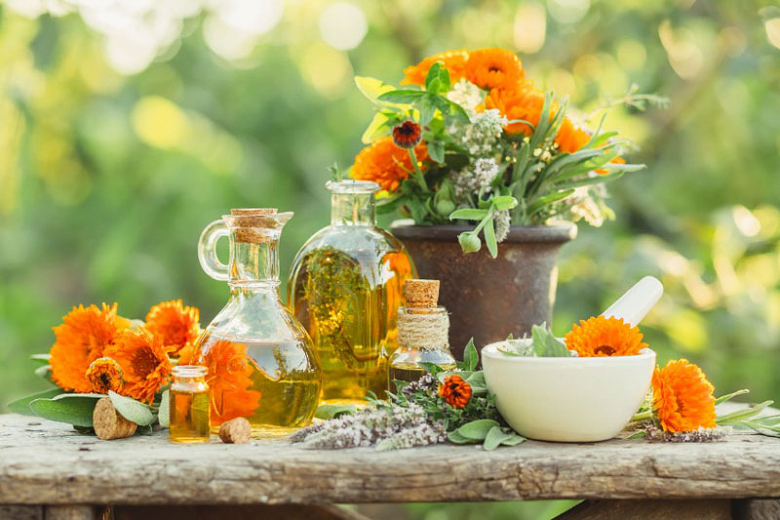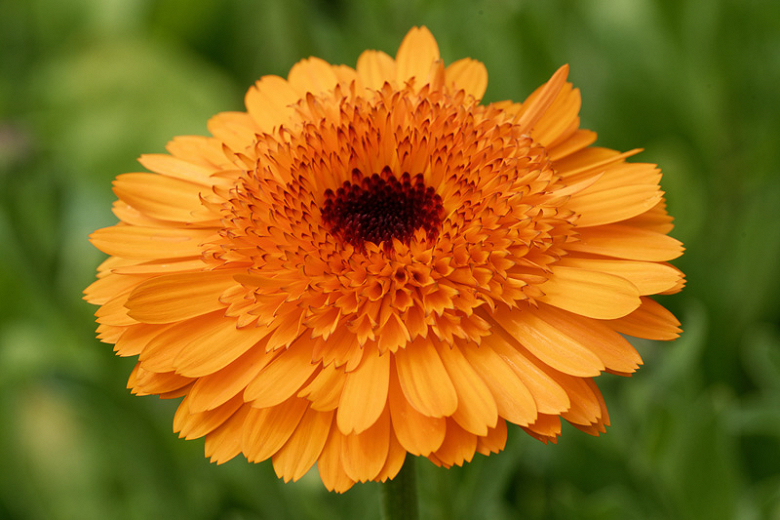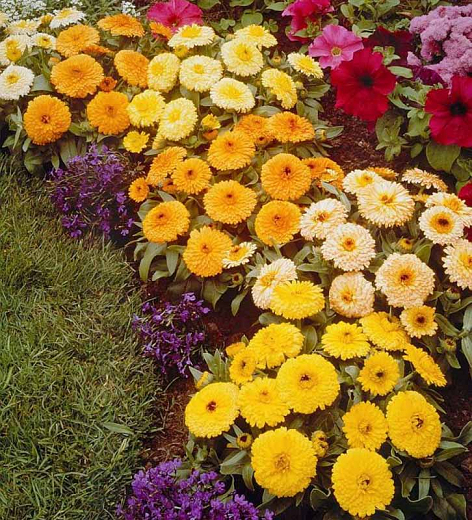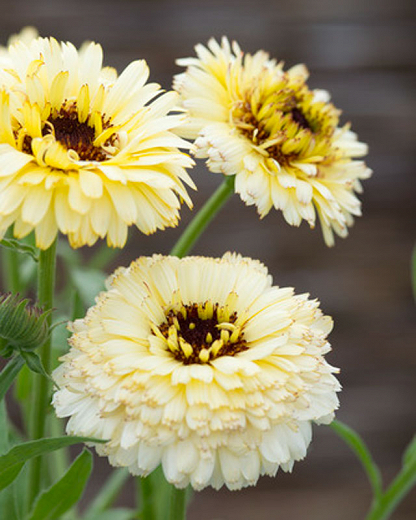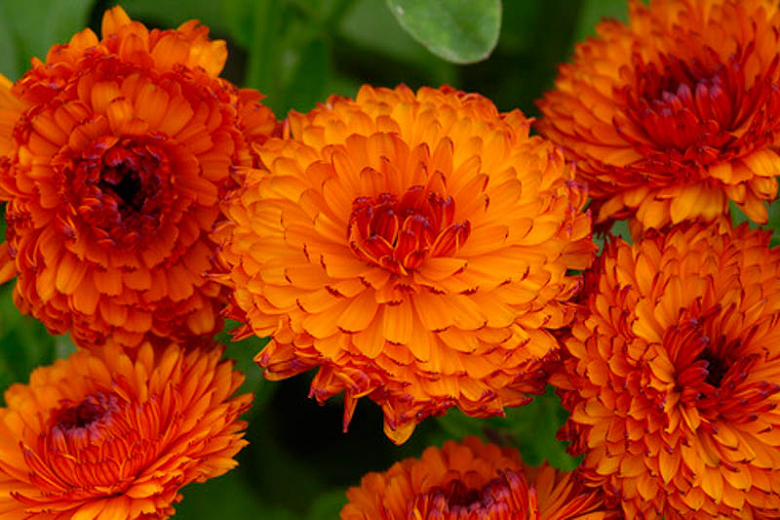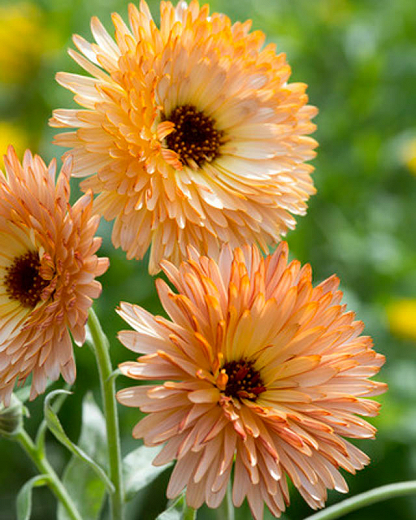Calendula (Pot Marigold)
Blooming their heart out in summer and fall, Tagetes (Marigolds) is a genus of annuals and perennials with showy single or double flowers in shades of orange, yellow, red, gold, white, and any combination of those colors. The strongly aromatic fern-like foliage repels pests such as deer or rabbits, making Marigolds great companion plants to other plants.
Among the easiest and most versatile flowers to grow in the garden, Calendula (Pot Marigold) is a showy hardy annual with aromatic foliage and a profusion of pretty daisy-like flowers over a long season. Prized by gardeners, it has also been used for many centuries for a range of culinary and medicinal purposes. Calendula offers so many benefits that every garden should have Calendula in it.
All you need to know about Calendula
- Along with asters, daisies, and sunflowers, Calendula belongs to the Asteraceae family and includes about 20 species of bushy annuals and herbaceous perennials that are native to southwestern Asia, western Europe, and the Mediterranean.
- Calendula officinalis is the most commonly cultivated species. This hardy annual plant has many common names including Poet's Marigold for the many poems written about it; Pot Marigold, which may be a reference to its ease of cultivation in pots; or Mary's Gold for its resemblance to the rays of light that radiate from the Virgin Mother's head.
- Despite these common names, Calendula is not a true Marigold. While Calendula shares many similarities to true Marigolds (genus Tagetes), they are two very different plants and should not be substituted for each other.
- Calendula is a cool-season hardy annual that blooms from late fall through spring in mild winter areas, from spring to fall in colder climates. It relishes cooler temperatures and often sulks when summer sets in, especially in hot-weather areas. While blooming may decrease in the summer heat, it resumes once temperatures cool down.
- Calendula flowers are daisy-like, about 3-4 in. wide (7-10 cm), and range in color from creamy white to dazzling orange, vibrant yellow, or more subtle shades of apricot, soft yellow, sometimes with contrasting tips. They may be single or double, with light or dark centers, and rise above the aromatic foliage of lance-shaped, green leaves.
- Calendula usually grows up to 12-24 in. tall (30-60 cm) and rarely beyond 24 in.
- Calendulas are unfussy plants. They thrive in most ordinary, well-drained garden soil in full sun. Some afternoon shade is welcomed in hot summer areas.
Guide Information
| Hardiness | 2 – 11 |
|---|---|
| Heat Zones | 1 – 12 |
| Climate Zones | 1, 2, 3, 4, 5, 6, 7, 8, 9, 10, 11, 12, 13, 14, 15, 16, 17, 18, 19, 20, 21, 22, 23, 24, 1A, 1B, 2A, 2B, 3A, 3B, A2, A3, H1 |
| Plant Type | Annuals |
| Plant Family | Calendula – Pot Marigold |
| Exposure | Full Sun, Partial Sun |
| Season of Interest | Spring (Late)Summer (Early,Mid,Late)Fall |
| Height | 1' – 2' (30cm – 60cm) |
| Spread | 1' – 2' (30cm – 60cm) |
| Water Needs | Average |
| Maintenance | Low |
| Soil Type | Chalk, Loam, Sand |
| Soil pH | Acid, Alkaline, Neutral |
| Soil Drainage | Well-Drained |
| Characteristics | Cut Flowers, Fragrant, Showy |
| Tolerance | Deer, Rabbit |
| Attracts | Bees, Butterflies |
| Landscaping Ideas | Beds and Borders, Edging, Ground Covers, Patio and Containers |
| Garden Styles | City and Courtyard, Informal and Cottage |
